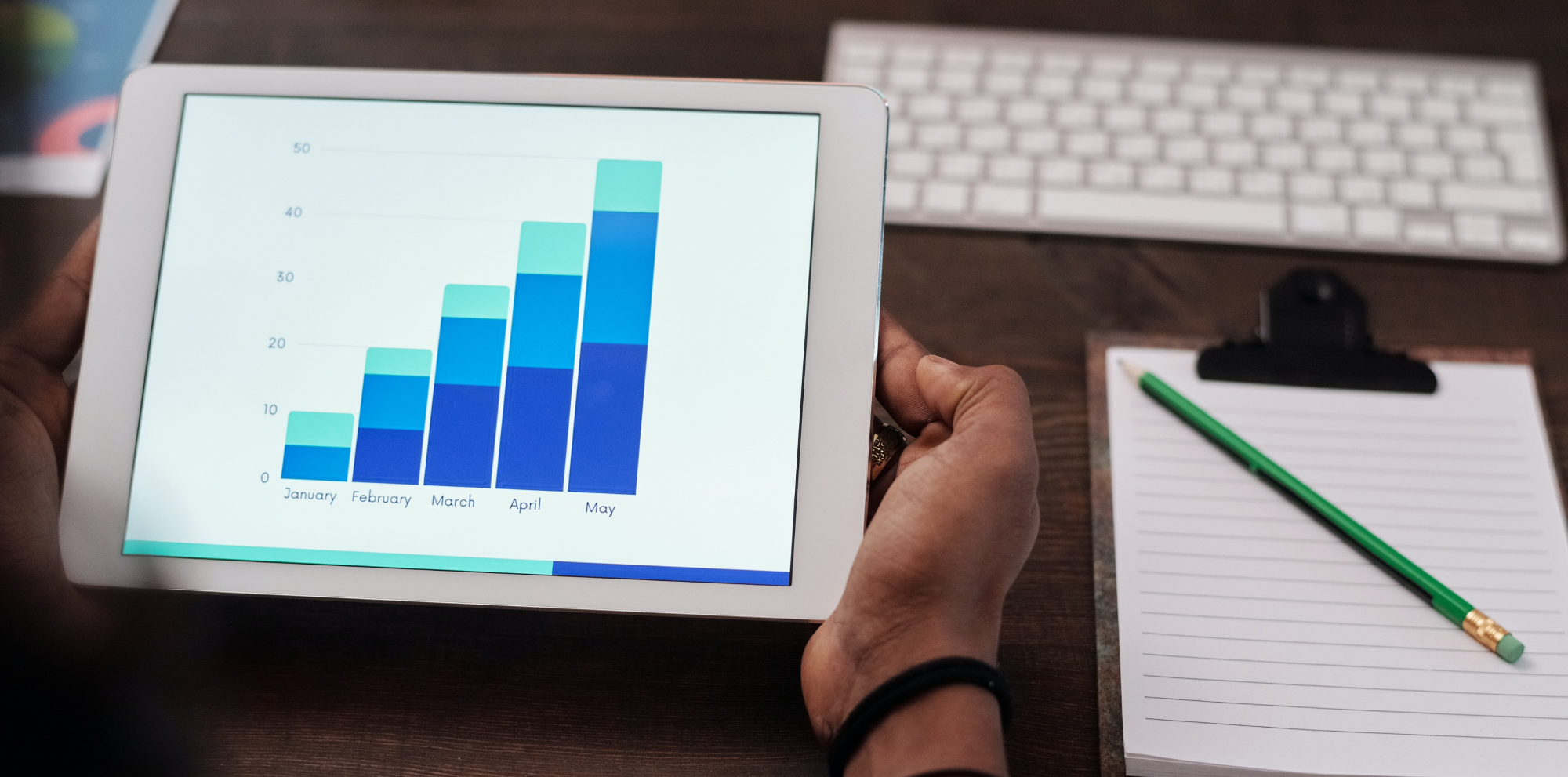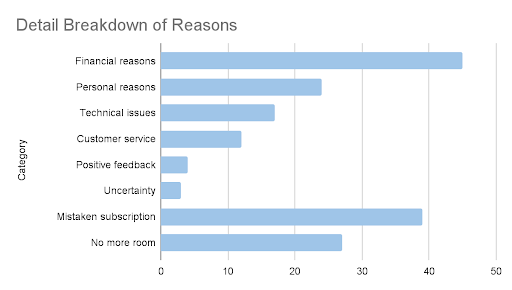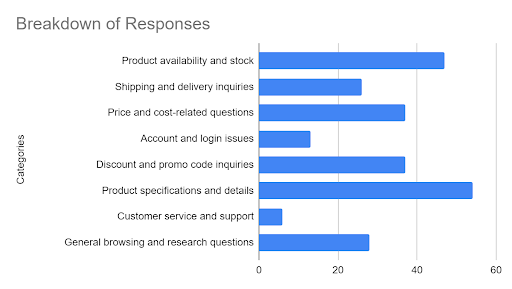How to Use ChatGPT for Data Analysis in Ecommerce
Using Chat GPT for data analysis has opened up opportunities for us to learn more from customers. Hear more about this process from Tom Cox, Data Analyst at Swanky, and learn how to do it for your ecommerce store too.
Written By
Tom Cox

Artificial Intelligence (AI) is steadily pervading our everyday lives. This experience has been especially acute with the offering of ChatGPT, a large language model from OpenAI, trained on a dataset of text and code.
The introduction of this language model, and others like Bard from Google, have received countless reactions and commentaries. This article will focus on one application of ChatGPT rather than exploring the morals or pitfalls of AI in general.
More specifically, we’ll focus on the use of ChatGPT for qualitative ecommerce data analysis, especially the analysis of free text customer feedback.
Why is it helpful to use ChatGPT for data analysis?
At Swanky, we pride ourselves on being data-led and placing the importance of data at the heart of our decision-making with clients. Consequently, we sift through a lot of data and are always looking for ways to improve this process – namely, to reduce resource spend and improve productivity.
A task that can be very time-consuming is summarising free text responses. This can be a tedious process, especially if the responses are long or complex. Nevertheless, these responses can be incredibly valuable within voice of customer analysis. The benefits of listening to customers include improving customer experience, gaining new insights about products, increased customer loyalty, and the creation of brand ambassadors. Ultimately, qualitative data can be a powerful tool as you look to grow your ecommerce brand.
We get lots of customer feedback through Hotjar, Recharge and email surveys which we try to categorise into specific sentiments. This process has typically taken around 2-3 hours per survey conducted and includes manually reading through and grouping responses.
A few months ago, we started using ChatGPT to help us with this task. We’ve found this to be an incredibly effective tool for summarising free text responses. It can quickly and accurately identify the key points of a response, generate a concise summary, and group it into prescribed categories.
How do we use ChatGPT to analyse data?
When it comes to the practicalities of using ChatGPT to analyse data, we do this using a Google Sheets add-on created by Talarian. This tool imports functions into Google Sheets that allow you to run calls to the ChatGPT API.
Once you’ve identified which categories you want responses to be grouped into, you can use the GPT_CLASSIFY function in Sheets to organise the data accordingly.
Below you can see examples of how we’ve used this method in practice.
Free text analysis examples from Swanky clients
1. Analysing subscription cancellation reasons
We recently applied this approach to improve the quality of insights we delivered during the discovery phase of a new project. This phase involves us taking time to understand a client’s business and ecommerce store as thoroughly as possible. The process often includes asking site customers for feedback to best inform our work with clients moving forward.
In the case of this project, we received over 100 responses through Recharge regarding the reasons for subscription cancellations. These then needed to be categorised and so we used the method detailed above. ChatGPT was able to group them into the following reasons and count how many times a response occurred. The results below were gathered:

The detail of these results can certainly be gained through human analysis. But the speed at which this detail was gathered cannot be achieved by humans. For this reason, it is certainly worth utilising ChatGPT’s AI prowess to speed up data analysis for free text responses.
The action we took after acquiring this information was to amend how easy it was for users to pause their subscription or skip a month. This saves them money (since financial reasons were highlighted as the primary reason for subscription cancellations) and retains them as a customer for the future.
2. Identifying barriers to purchase
Another example where we have used ChatGPT to accelerate processes is during the ideation phase of our testing programmes. We regularly seek both qualitative and quantitative insights to gain understanding of how websites are performing. For this, the more detail, the better, but this again can be a time consuming endeavour.
In this example we used Hotjar to ask customers about their experience on-site with the following question:
Hi, thanks for visiting us! Before you go, if you didn’t buy today, what stopped you?
Customers had the opportunity to provide a free text response sharing why they were unable to purchase and we received over 250 responses. Using ChatGPT we were able to categorise all of these responses in under 10 minutes into the following categories:

This rapid categorisation allows us to quickly understand common themes and focus on areas that are going to deliver high impact tests. It can be a helpful process as we look to create a prioritised testing roadmap for our clients.
What does this mean going forward?
At Swanky we are constantly in search of ways to improve how we operate and integrate customer feedback into our work. Free text answers can offer you far greater insight into customer perception of a brand or online store, than multiple-choice responses to a survey, for example. However, the price you pay for this insight is the time spent grouping these responses.
This is why we’re excited about using AI in this capacity; it reduces the data analysis time, thus raising the opportunity to ask customers for more free text responses. In other words, time would no longer be a limiting factor in how we conduct customer insight processes.
Is your ecommerce decision making data led?
We are constantly looking for ways to improve our data-led decision making with clients. This is why using tools like ChatGPT for data analysis is exciting; it expands the scope of what we can achieve in a set time frame, thus meaning we can be ever more informed by data.
Our data analysts are experts at what they do and are using market-leading tools like Littledata and Glew to help provide detailed insights to clients. The data services we offer are at the forefront of the ecommerce industry, enabling the brands we work with to be more confident in their decisions and see rapid results.
Get in touch with us today to learn how our data analysts can help grow your ecommerce store.

